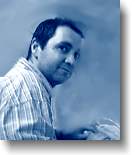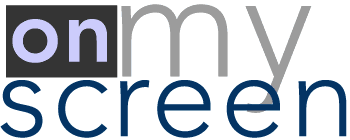
Adrian Miles teaches cinema studies and
'new media' to media studies students at the Royal Melbourne
Institute of Technology in Melbourne, Australia. He is
married, with one nearly
three year old daughter, and reports that "I go into the bush or the mountains
not nearly as often as I need to." He rides his bike, PowerBook in tow,
to work each day, and dreams of the day when he visits a place where he can
ski to his job in the morning.
Adrian Miles' recent hypertext projects include:
Adrian Miles
"What hypertexts -- either published or samizdat or on the Web -- are you reading and enjoying right now?"I'm reading Twilight: A Symphony as part of the same exploration of loss and lack in hypertext that Michael Joyce started with afternoon. I'm interested, and I suppose a bit beguiled, by Joyce's penchant for discourses of loss in hypertext, and am still deciding whether this has more to do with Joyce or is a literary response to a textual form without the security of narrative centre.
"What hypertexts would you especially recommend to interested people? What hypertexts aren't well known, but ought to be?"
I would strongly recommend to people the student work from Brown University in George Landow's Writing At The Edge.
The reason I suggest this is because there is some quite creative work being done in a simple environment, and it tends to show you, very quickly, some of the things that can be done in hypertext. What I'd also emphasise is that the students have had very little technical training, and the sorts of structures they build -- even the shapes they decide to make -- are intriguing experiments in form, content, and structure.
I find Mark Amerika's Grammatron interesting as something that struggles to be hypertext and visual art at the same time. I think it struggles, but I also think it is a beginning with some virtues. (Where the Sea Stands Still is a more refined and poetic development of the same spirit, but Grammatron appears to retain a stronger emaphasis on the word as 'merely' discourse rather than its more abstract forces (and beauty) as poetry.)
New River (edited by Edward Falco) is theplace for hypertext fiction that explores what can be done in HTML. This is an excellent place for students to start reading, just to begin to get an idea of what can be done, without thinking you have to start with Java, embedded audio, QTVR panoramas and the rest. It is good to learn that less is often more, after all.
Finally, the just-launched VENEW is a new attempt to put online soap opera and narrative on the net. The funding is from a national film and dramatic arts school and it is explicitly about Australian dramatic content via the web.

Eastgate
Fiction Nonfiction
Poetry Hypertext
Storyspace Tinderbox
HypertextNow Order

